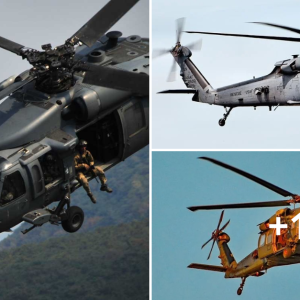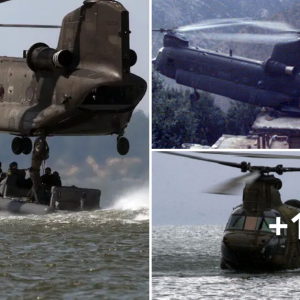In July 2005, the United States Army placed a contract on Bell Helicopters for the next-generation armed reconnaissance helicopter, ARH. The ARH, designated the ARH-70A Arapaho, was to replace the army’s current Bell OH-58D Kiowa Warriors which have been in operation since the mid 1980s and are approaching the end of their operational life.

The $2.2bn programme was for the procurement of 368 helicopters with deliveries from 2009 to 2013. The initial $210m contract, awarded on 29 July 2005 to Bell Helicopters, covered the system design and development phase through 2007.
In June 2007, it was agreed by the US Army and Bell that the SDD phase should be extended for a year to 2008. This would conclude with a limited user test (LUT), followed by a decision on low-rate initial production (LRIP).
A stop work order was issued by the US Army in March 2007 because of concerns over progress and costs on the project. However in May 2007, the army decided to lift this order and continue with the programme.

In October 2008, the US Army terminated the ARH programme. Spiralling costs and delays were cited as the reason for the cancellation. The ARH was originally scheduled for delivery by 2009, but this had slipped to 2013.
Militarised Bell 407 helicopter
The ARH is a militarised version of the proven Bell 407 helicopter. The engine on the civil Bell 407 has been replaced by a more powerful Honeywell HTS900 turboshaft engine rated at 723kW. An example of the militarised Bell 407 fitted with the undernose FLIR Systems Brite Star II surveillance and target acquisition system was displayed at the July 2005 Paris Air Show at Le Bourget.

The militarised version of the Bell 407 fitted with Hydra 70 air-to-ground rockets made its first flight in June 2005 from Bell Helicopter’s XWORX research and development centre at Arlington Municipal Airport.
The major contractors involved in the ARH programme with Bell Helicopters are FLIR Systems, Honeywell, Rockwell Collins, as well as Flight Safety, Computer Sciences Corporation and L-3.
The ARH airframe is manufactured at the Bell Helicopter Textron aerospace manufacturing facilities at Mirabel, Canada. Final assembly and installation of military equipment took place at Bell’s Fort Worth plant.

The helicopter can be equipped for light reconnaissance, light attack and insertion operations and is capable of day and night operations, in adverse weather conditions and in poor visibility.
“The US Army’s ARH-70A is a militarised version of the proven Bell 407 helicopter.”
The US Army launched the requirement for the armed reconnaissance helicopter after the cancellation of the $39bn RAH-66 Comanche programme in early 2004.

The US Army cancelled the Comanche programme because it was thought the helicopter did not meet the requirement for survivability and self-defensive countermeasures, such as the ability to counter current and next generation infrared guided anti-air missiles.
During April 2009, the US Army awarded a $60.3m contract for 24 407 Bell helicopters. The helicopters will be provided to the Iraqi Air force as part of planned foreign military sale to Iraq.
The US Army purchased three 407 helicopters from Bell in February 2009 that are currently being used as prototype aircraft for the development and testing of military modifications.

Upon the completion of finished qualification with initial prototype aircraft, military unique modifications will be applied to 24 production aircraft before delivery to the Iraqi Air Force.
ARH-70A cockpit
Rockwell Collins is responsible for the ARH avionics suite, the common avionics architecture system (CAAS), which is also being fitted on US Army’s special operations, CH-47F and UH-60M fleets.

The CAAS includes two 6in×8in colour active matrix liquid-crystal MFD-268 multi-function displays and CDU-7000 control display units which control communications, navigation, ωɛλρσɳs and defensive aids.
Bell has awarded a contract to EFW, an Elbit Systems company, for a helmet display and tracking system based on the ANVIS/HUD-24T. The system has a day / night helmet display and line-of-sight (LOS) electromagnetic head-tracker. EFW is also supplying the helicopter’s data transfer system.
The suite also includes an embedded GPS / inertial navigation system and Smiths Aerospace integrated standby instrument system (ISIS).

Reconnaissance helicopter sensors
The sensor suite includes the Bright Star II target acquisition and sighting system developed by FLIR Systems. The sensor turret will be installed under the nose of the helicopter and incorporates a laser designator and range finder, a laser spot tracker, colour television and a forward-looking infrared camera.
ARH-70A ωɛλρσɳs

The helicopter can be armed with a variety of ωɛλρσɳs to suit the mission requirements. The helicopter is capable of deploying AGM-114 Hellfire missiles, GAU-19 (12.75mm) Gatling gun pods which fire at 2,000 rounds a minute, Hydra 70 air-to-ground rockets and up to seven 2.75in guided or unguided rockets such as the folding-fin aerial rocket pods (FAR pods).
The helicopter will be fitted with an electronic ωλɾʄλɾɛ suite including active and passive countermeasures.
Engine

The ARH-70A is powered by one Honeywell HTS900-2 turbine engine equipped with dual channel full authority digital engine control (FADEC) system. The HTS900-2 is rated at 970shp (723kW).
“The ARH-70A can be armed with a variety of ωɛλρσɳs to suit the mission requirements.”
Performance
The performance of the ARH, the militarised 407, is modified by the additional weight and different aerodynamic properties based on the ωɛλρσɳs pylons, FLIR pod and other mission equipment.
Typical approximate performance parameters are range of 212km and an endurance of two hours, according to the mission configuration and battlefield flight profiles.
Helicopter manoeuvrability

The helicopter is highly manoeuvrable with exceptional low-hovering capability in restricted air spaces such as in urban environments. Two armed reconnaissance helicopters can be transported in a C-130 Hercules transport aircraft and be ready to fly in 15 minutes.





